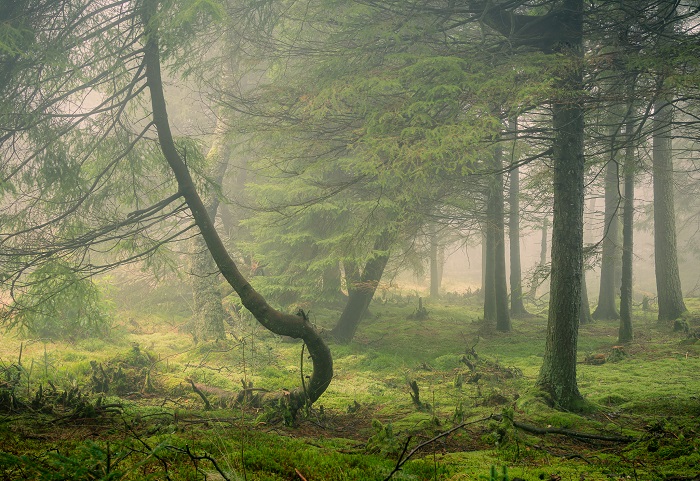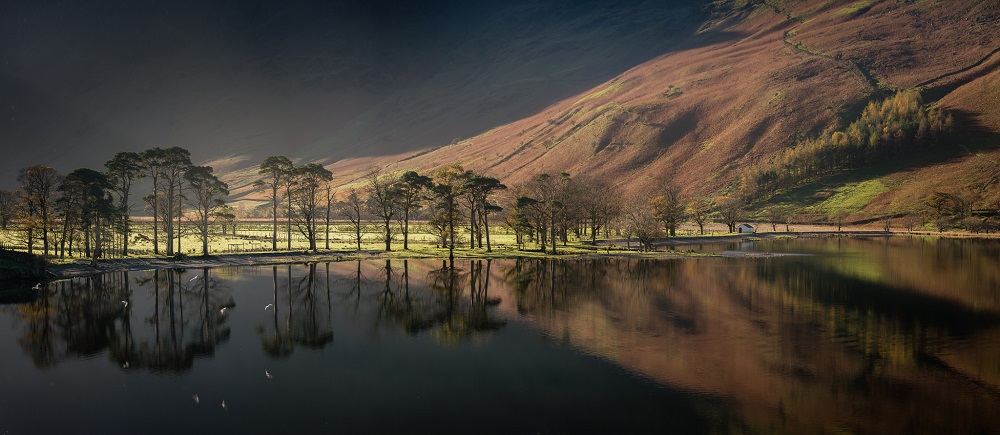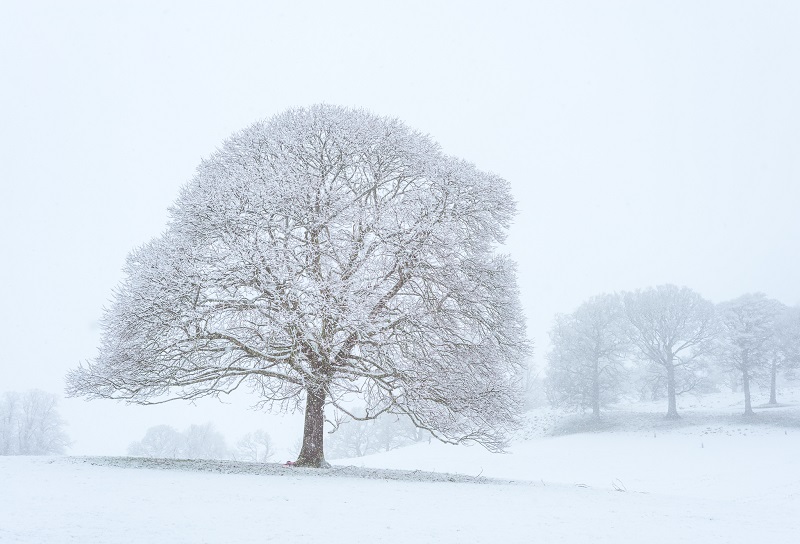Last Updated: February 14th, 2020
On the face of things, landscape photography couldn’t be simpler: Find a pretty scene, press the shutter. No moving subjects to track, no models to pose, no wedding guests to battle with.
However, once you delve a little deeper it becomes obvious that there’s much more to landscape photography. Anybody can take a snapshot of a pretty vista, but it takes a photographer to craft a compelling image that reflects the landscape.
Everything from the location to the composition to the way we portray movement has a profound effect on the final image. It’s a lot to take in as a beginner, but remember these 5 things and you’ll be well on your way.
If you find yourself wanting more, check out our Ultimate Guide to Landscape Photography.
1. Composition is Always King
 You know what all great photographs have in common? Every one of them has a well thought out composition behind it.
You know what all great photographs have in common? Every one of them has a well thought out composition behind it.
Without a solid composition even the most spectacular phenomenon can fall flat in the viewers’ eyes. This is arguably even more true in today’s age, where the millions of images shared online every day have somewhat desensitized us to natural beauty.
What exactly makes a good composition though?
You’ve probably already heard about all these compositional rules you should be following. The rule of thirds, the rule of odds, leading lines, horizon placement, and all the rest of them (we’ll get on to those in a short while) but the short answer is this:
Good composition should make the viewer forget they’re looking at a photograph.
That’s what we’re aiming for, and it’s the ultimate challenge when we’re trying to convey the 3-dimensional landscape on a 2-dimensional medium. There are a few things we can look out for when trying to achieve this:
Depth
Creating a sense of depth in your landscape images is a great way of transporting the viewer into the scene. That depth helps to combat the fact that a photo is 2-dimensional and draws the viewer’s eye through the scene. How can we create depth?
- Clear foreground subjects
- Leading lines
- Separation (eg ‘hiding’ the background using mist or depth of field, or displaying the contrast between an illuminated foreground and a background steeped in shadow)
Interest
This one is fairly self explanatory. Things like foreground subjects and leading lines aren’t as effective if they’re bringing the viewers’ attention to boring things.
Movement
If your scene has moving elements in, your shutter speed can have a drastic impact on the final image. Experiment with different exposure times to try and convey this movement in a way that reflects the overall scene.
If you’re shooting a stormy seascape you might opt for a 0.5 second exposure to capture the movement of the waves while still retaining the dramatic detail. If it’s a calm sunrise on a lakeshore a longer shutter speed could enhance that feeling of serenity.
2. There’s No Such Thing as Bad Light

You can’t take a photo without light, and while other genres of photography can learn to manipulate artificial light to achieve the result they want, landscape photographers pretty much get what they’re given.
In many ways that makes things a lot simpler though. Sure, we don’t have the choice, but we also don’t have the difficulties that come with learning how to use speedlights and off-camera flashes and studio lights.
We do, however, have to learn to use what we’re given.
Contrary to what many think, landscape photography doesn’t have to be confined to the ‘Golden Hours’ after sunrise and before sunset. There are images to be had in all sorts of conditions (although harsh midday sun is often best avoided!)
What we want to do is to let the light work with our composition to produce a cohesive feeling to the image. For example, a clear blue sky might not be the best choice when photographing a wild and dramatic landscape. Instead, a stormier weather forecast might best be suited to that location.
Flat, grey, overcast skies might not be the most tempting conditions for landscape photography, but all is not lost! Head out and look for minimal, simplistic compositions and further simplify the image using a long exposure. Accentuate those steely grays and blues.
Blowing a gale and black clouds approaching? Try heading to the coast and emphasizing that sense of drama and foreboding.
Long story short, learn to work with what you’re given and you’ll start seeing photo opportunities everywhere.
3. Wider Isn’t Always Better
 Wide-angle lenses are great for landscape photography, but far too many photographers get too caught up in needing to go as wide as possible all of the time.
Wide-angle lenses are great for landscape photography, but far too many photographers get too caught up in needing to go as wide as possible all of the time.
There’s a time and a place for wide-angle vistas, but don’t neglect the longer focal lengths either. In fact, I’d estimate that at least 30% of my images are taken at 50mm or longer.
Wide-angle perspectives are great for fitting as much as possible into the frame, but they can often result in cluttered images that lack any true interest. Basically, snapshots of a pretty view.
By using longer focal lengths you’re able to really hone in on the interesting aspects of a landscape. Maybe it’s the light playing across a mountainside, or a certain tree that stands out from the rest of the woodland clutter.
Isolating subjects is far from the only use of longer focal lengths too. They can also help with:
- Enhancing sense of scale.
- Using depth of field more creatively.
- Eliminating surrounding clutter from the frame.
- Giving a new perspective of well photographed locations.
Don’t limit yourself to 20mm and below, there’s a whole lot more focal length you can make use of!
You can find more about the best landscape photography lenses here.
4. Rules Are Made to be Broken
 I gave a quick mention to some well known ‘photography rules’ above. You know the ones – Almost every article you read tells you to follow the rule of thirds, make sure to use leading lines, don’t put the horizon in the center of the frame, always shoot in the Golden Hours etc.
I gave a quick mention to some well known ‘photography rules’ above. You know the ones – Almost every article you read tells you to follow the rule of thirds, make sure to use leading lines, don’t put the horizon in the center of the frame, always shoot in the Golden Hours etc.
But you know what they say: Rules are made to be broken.
Sure, these tidbits of advice have their place, and they can definitely be useful when starting out in landscape photography. However, if you simply follow them blindly your photography will start to become stale and predictable.
I’ve gone into more detail on when and how to break the photography rules here, but the simple takeaway is this: View every photograph as an individual.
Don’t place a subject on an intersecting third just because you should. Instead, think about it on an individual basis. Where would that subject look best and why?
5. You Might Not Always Get the Shot
It’s a hard fact to swallow, but not every outing into the landscape will result in a killer image.
Conditions might not play out the way you were expecting, or something unforeseen might happen that spoils your planned shot.
Hell, it can even happen when everything is stacked in your favor. Sometimes we’re just not in the ‘zone’, and we can’t seem to find that shot no matter how hard we try.
You might not always get the shot you were hoping for… And that’s fine.
Simply enjoy being in the great outdoors and appreciate being able to connect with nature. There will always be another day to get the shot.